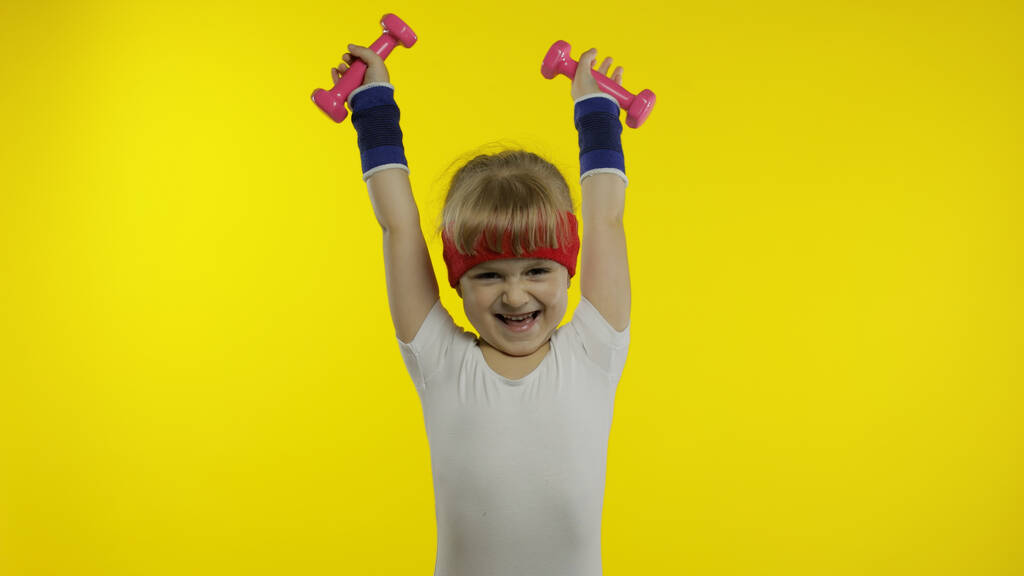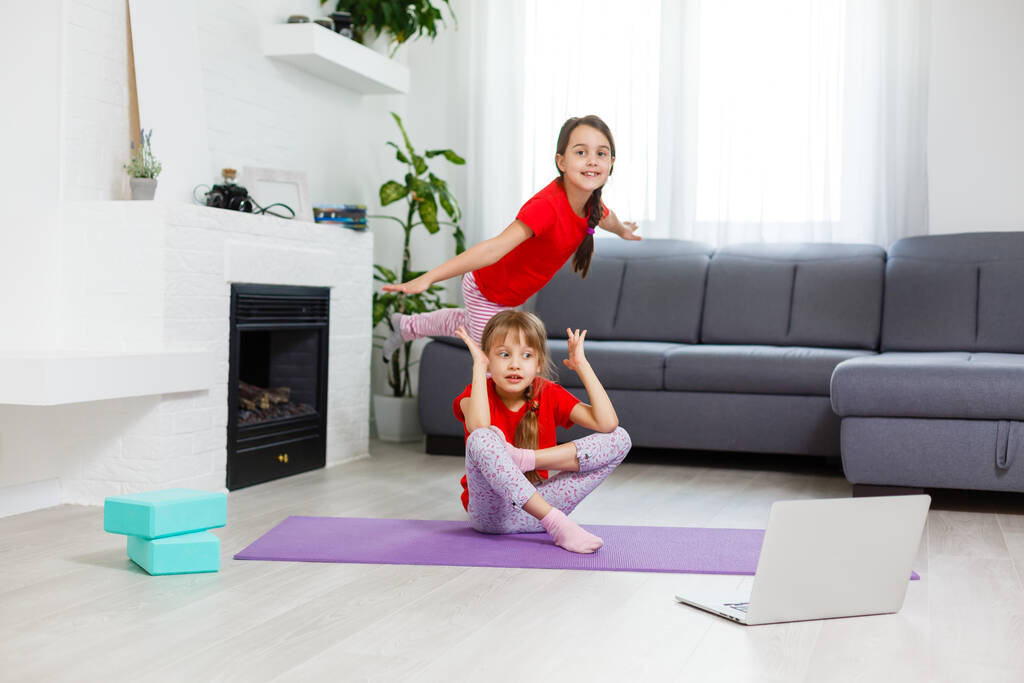Discover effective strategies and techniques for teaching physical fitness to 5-6 year old children in this comprehensive guide.
Teaching Physical Fitness to 5-6 Year Old Children: A Guide
Physical fitness is not only important for adults, but also for young children. In fact, instilling healthy habits at a young age can set the foundation for a lifetime of well-being. As parents or educators, it is crucial to understand the significance of physical fitness in child development and to find creative ways to incorporate fitness into the daily routine of 5-6 year olds. In this guide, we will explore the importance of physical fitness for young children and provide practical tips for teaching fitness concepts to this age group.

Understanding the Importance of Physical Fitness for Young Children
Physical fitness plays a vital role in the overall development of young children. Not only does it improve their physical health, but it also enhances their cognitive abilities, social skills, and emotional well-being. By engaging in physical activities, children develop gross motor skills, coordination, balance, and agility. Furthermore, regular exercise boosts their self-confidence and improves their mental focus. It also allows them to develop teamwork and communication skills when engaging in group activities. Overall, physical fitness is an essential component of a child’s holistic development.
The Role of Physical Fitness in Child Development
Physical fitness contributes to various aspects of child development. For instance, it helps to strengthen muscles and bones, leading to better overall physical health. It also aids in the development of a healthy cardiovascular system, reducing the risk of heart disease later in life. Additionally, physical fitness promotes better sleep patterns, which is crucial for a child’s growth and development. Regular exercise also helps to regulate energy levels and improves mood, reducing the chances of behavioral issues.
Moreover, physical fitness has a positive impact on a child’s cognitive abilities. When children engage in physical activities, their brains release endorphins, which are chemicals that promote feelings of happiness and well-being. These endorphins not only improve mood but also enhance cognitive function, including memory and attention span. Therefore, regular exercise can improve a child’s academic performance and overall cognitive development.
Socially, physical fitness provides opportunities for children to interact and engage with their peers. Whether it’s playing team sports or participating in group exercises, children learn important social skills such as cooperation, communication, and teamwork. These skills are essential for building healthy relationships and developing a sense of belonging. Physical fitness also promotes inclusivity and diversity, as children from different backgrounds and abilities can come together and enjoy physical activities together.
Health Benefits of Regular Exercise for Children
Engaging in regular exercise has numerous health benefits for young children. It improves their cardiovascular fitness, which not only promotes a healthy heart but also enhances stamina and endurance. Regular physical activity also helps to maintain a healthy weight, reducing the risk of obesity and related health problems. Furthermore, exercise boosts the immune system, reducing the likelihood of illness. It also improves lung function and helps to develop healthy respiratory patterns. Overall, regular exercise sets the foundation for a healthy and active lifestyle.
In addition to the physical health benefits, regular exercise also has positive effects on a child’s mental well-being. Physical activity releases endorphins, which act as natural mood elevators and stress relievers. This can help children manage their emotions and reduce feelings of anxiety and depression. Moreover, regular exercise can improve a child’s self-esteem and body image, as they become more confident in their physical abilities. This confidence can extend to other areas of their lives, such as academics and social interactions.
Furthermore, regular exercise can have long-term effects on a child’s health. By establishing healthy habits early on, children are more likely to continue leading an active lifestyle into adulthood. This can significantly reduce the risk of chronic diseases such as diabetes, heart disease, and certain types of cancer. Additionally, regular exercise can improve bone density, reducing the risk of osteoporosis later in life.
In conclusion, physical fitness is crucial for the overall development of young children. It not only improves their physical health but also enhances cognitive abilities, social skills, and emotional well-being. Regular exercise sets the foundation for a healthy and active lifestyle, providing numerous short-term and long-term health benefits. Encouraging children to engage in physical activities from a young age is essential for their holistic development and lays the groundwork for a lifetime of well-being.
Tailoring Fitness Activities for 5-6 Year Olds
When it comes to teaching physical fitness to 5-6 year olds, it is important to consider age-appropriate activities that are both fun and engaging. Here are some practical tips for tailoring fitness activities for this age group:
Age-Appropriate Physical Activities
At this stage, children are still developing their coordination and balance. Therefore, focus on activities that help improve these skills, such as hopping, skipping, jumping, and running. Incorporate games that involve throwing and catching to enhance hand-eye coordination. Additionally, activities like swimming, dancing, and riding a tricycle help to promote overall physical fitness.
When it comes to hopping, encourage children to hop on one foot and then switch to the other. This helps them develop balance and coordination. Skipping can be introduced by teaching them the basic skipping technique, where they alternate hopping on one foot and then the other. Jumping can be made more fun by setting up obstacle courses with small hurdles or using jump ropes. Running can be incorporated into games like tag or relay races, where children can compete and have fun while improving their cardiovascular endurance.
Throwing and catching activities can be done with soft balls or bean bags. Start with simple tossing and catching exercises and gradually increase the difficulty by adding movement or increasing the distance between participants. This helps children develop hand-eye coordination and motor skills.
Swimming is a great activity for overall physical fitness as it engages the entire body. It helps children develop strength, endurance, and flexibility. Dancing is another fun way to improve fitness. Encourage children to move to the beat of the music, teaching them simple dance steps and routines. Riding a tricycle not only improves balance and coordination but also strengthens leg muscles.
Balancing Fun and Fitness in Activities
While it is important to prioritize physical fitness, it is equally important to make activities enjoyable for 5-6 year olds. Incorporate elements of fun and playfulness into fitness activities. Use colorful equipment, play upbeat music, and create games that involve friendly competition. By making fitness a fun part of their routine, children are more likely to stay engaged and develop a lifelong love for physical activity.
When using colorful equipment, consider using cones, hula hoops, or agility ladders in bright colors. This adds excitement and visual appeal to the activities. Playing upbeat music can energize the children and make the activities more enjoyable. You can create playlists with their favorite songs or choose music with a fast tempo to keep them moving. Friendly competition can be introduced through games like relay races or obstacle courses, where children can compete in teams or individually. This not only adds a fun element but also motivates children to push themselves and improve their fitness levels.
Remember to create a safe and inclusive environment for all children. Provide clear instructions and demonstrations for each activity, and encourage children to participate at their own pace. Offer modifications or alternatives for children with different abilities or interests. By tailoring fitness activities to the specific needs and interests of 5-6 year olds, you can create an engaging and enjoyable experience that promotes their physical well-being.
Incorporating Fitness into Daily Routine
Teaching physical fitness to young children goes beyond scheduled exercise sessions. It is important to incorporate fitness into their daily routine. Here are some effective strategies:
Making Fitness a Fun Part of Everyday Life
Encourage children to make fitness a part of their daily activities. Encourage them to use the stairs instead of the elevator, walk or bike to nearby places, and engage in active games during playtime. Ensure that they have access to safe outdoor spaces where they can run, jump, and play freely. These simple changes in daily routine can make a significant impact on their overall fitness levels.
Encouraging Active Playtime
Allocate dedicated time for active play each day. Encourage children to participate in activities that get their bodies moving, such as playing tag, kicking a ball, or playing on playground equipment. Encourage them to explore different types of physical activities and discover what they enjoy the most. By providing opportunities for active play, children will develop a positive relationship with exercise.
Teaching Basic Fitness Concepts to Children
When introducing fitness concepts to 5-6 year olds, it is important to keep it simple and engaging. Here are some tips for teaching basic fitness concepts:
Explaining the Importance of Exercise
Start by explaining to children why exercise is important for their overall well-being. Use simple language and relatable examples to help them understand the benefits of physical activity. For instance, explain how exercise helps make their muscles strong and their hearts healthy. Encourage them to ask questions and be open to their curiosity about their bodies.
Introducing Simple Fitness Terminology
Teach children basic fitness terms such as “warm-up,” “cool-down,” and “stretching.” Explain their importance and demonstrate how to perform each activity. Encourage them to practice these activities before and after physical play. Incorporate games and fun activities that help reinforce these concepts. By introducing fitness terminology early on, children will develop an understanding of the language used in the fitness world.
Overcoming Common Challenges in Teaching Fitness to Children
Teaching fitness to 5-6 year olds can come with its challenges. However, with the right approach, these challenges can be overcome. Here are some strategies for addressing common challenges:

Addressing Short Attention Spans
5-6 year olds often have short attention spans, making it important to keep activities short and engaging. Break exercises into small segments and keep transitions between exercises smooth. Use storytelling or songs to make activities more interesting and capture their attention. Additionally, incorporate a variety of activities to keep them interested and prevent boredom.
Dealing with Resistance to Physical Activity
Some children may resist physical activity due to various reasons. To overcome this, create a positive and supportive environment where they feel encouraged to participate. Be a role model by engaging in physical activity yourself. Celebrate their achievements and provide gentle motivation and encouragement. By creating a positive association with exercise, children are more likely to embrace physical activity.
In conclusion, teaching physical fitness to 5-6 year old children is an essential aspect of their holistic development. By understanding the importance of physical fitness in child development and tailoring fitness activities to their age group, we can instill healthy habits that will benefit them throughout their lives. By incorporating fitness into their daily routine and teaching them basic fitness concepts, we can help them establish a lifelong love for exercise. With the right approach and strategies for overcoming challenges, we can ensure that they develop a strong foundation of physical fitness. So let’s get moving and make physical fitness a playful part of their lives!



